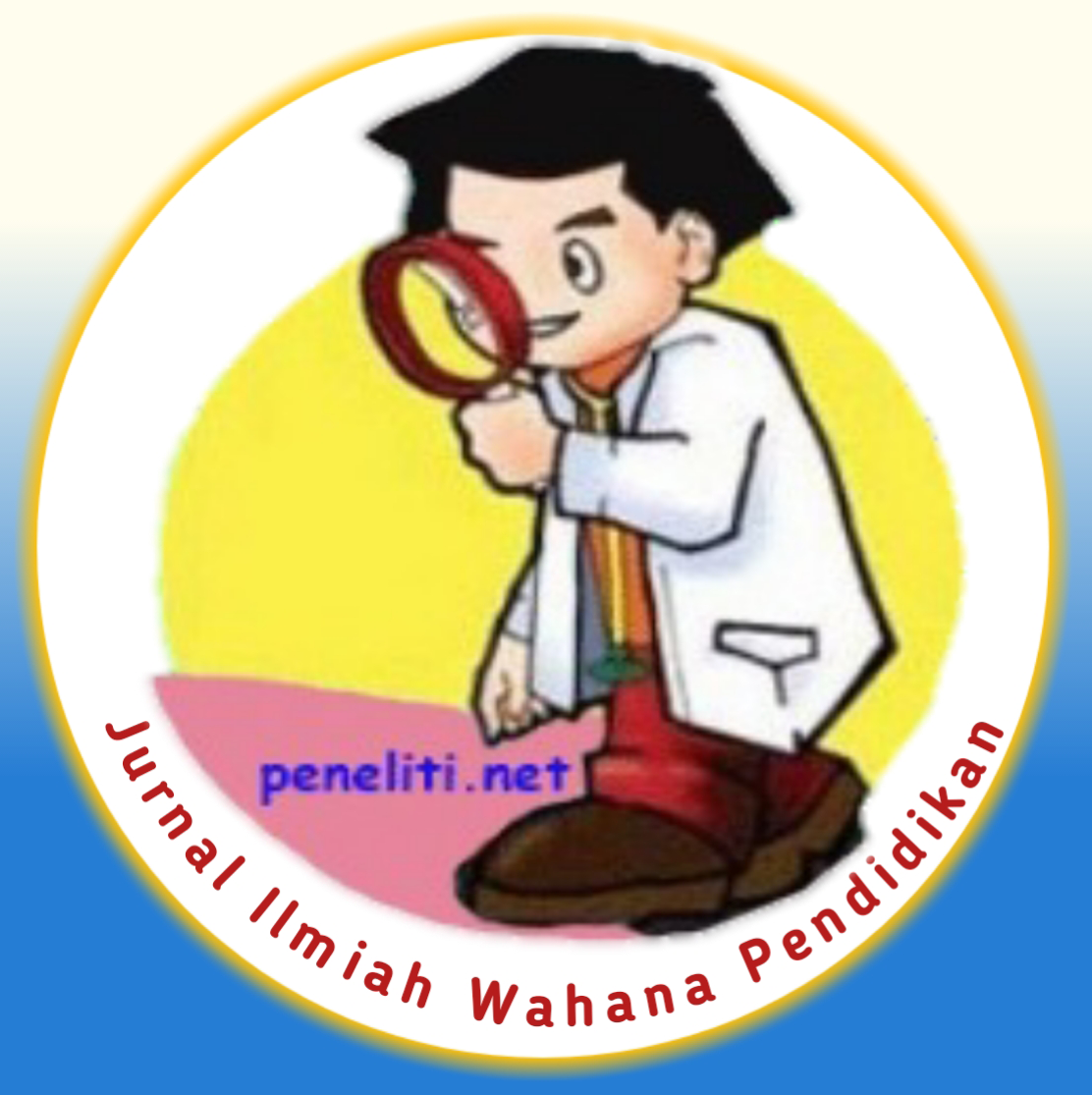Motivasi dan Interaksi Pada Pembelajaran Blended Learning
Abstract
Blended learning, which combines online and face-to-face learning, has become a common practice in higher education. The purpose of this research is to analyze the motivation and the interactions that occur in the blended learning. This study uses a qualitative and quantitative approach. Data were collected using questionnaires and interviews. The sample of this study were 24 students enrolled in the Computer Applications course. The results of this study indicate that students have confidence in learning (score 5.11). Students also have sufficient intrinsic motivation to undergo learning (score 5.26). In addition, students did not feel too anxious when following the lesson. Students also try to learn from mistakes when they fail the exam. Furthermore, even though they find it difficult to do the various assignments given, students prefer such (difficult) tasks to easy tasks. Interaction in the classroom occurs quite often because the lecturer walked around in the classroom to help students who were having difficulties. Online interaction also occured between lecturers and students which is one of the advantages of blended learning. Thus, blended learning can increase motivation and interaction if it is well designed and implemented consistently.
References
Alderman, M. K. (2004). Motivation for Achievement: Possibilities for Teaching and Learning (2nd ed.). Lawrence Erlbaum Associates.
Babb, S., Stewart, C., & Johnson., R. (2010). “Constructing Communication in Blended Learning Environments: Students’ Perceptions of Good Practice in Hybrid Courses. MERLOT Journal of Online Learning and Teaching, 6(4).
Banditvilai, C. (2016). Enhancing Students’ Language Skills through Blended Learning. The Electronic Journal of E-Learning, 14(3), 220–229.
Bath, D., & Bourke, J. (2010). Getting Started With Blended Learning. Griffith University.
Bielawski, L., & Metcalf, D. (2003). Blended eLearning: Integrating Knowledge, Performance, Support, and Online Learning. HRD Press.
Bowyer, J., & Chambers, L. (2017). Evaluating blended learning: Bringing the elements together. Research Matters: A Cambridge Assessment Publication, 23.
Cooper, L. W. (2001). A Comparison of Online and Traditional Computer Application Course. T.H.E. Journal, 28(8).
Creswell, J. W. (2009). Research Design: Qualitative, Quantitative, and Mixed Methods Approaches (3rd ed.). SAGE Publications.
Garrison, D. R., & Vaughan., N. D. (2008). Blended Learning in Higher Education: Framework, Principles, and Guidelines. Jossey-Bass.
Horn, M. B., & Staker, H. (2015). Blended: Using Disruptive Innovation to Improve Schools. Jossey-Bass.
Islam, S., Baharun, H., Muali, C., Ghufron, M. I., Bali, M. E. I., Wijaya, M., & Marzuki, I. (2018). To Boost Students’ Motivation and Achievement through Blended Learning. Journal of Physics: Conference Series, 1114(1). https://doi.org/10.1088/1742-6596/1114/1/012046
Jacot, M. T., Noren, J., & Berge, Z. L. (2014). The Flipped Classroom in Training and Development: Fad Or The Future? Performance Improvement, 53(9), 23–28.
Khan, Z. R. (2014). Using Innovative Tools to Teach Computer Application to Business Students - A Hawthorne Effect or Successful Implementation Here to Stay. Journal of University Teaching & Learning Practice, 11(1).
Khe, F. H., & Cheung., W. S. (2014). Using Blended Learning: Evidence-Based Practices. Springer.
Klocke, A., & Hedegard., D. (2015). Blending in the Humanities: Course Model and Assessment Results. In J. Keengwe & J. J. Agamna. (Eds.), Models for Improving and Optimizing Online and Blended Learning in Higher Education. Information Science Reference.
Lin, Q. (2009). “Student Views of Hybrid Learning: A One-Year Exploratory Study. Journal of Computing in Teacher Education, 25(2).
Linawati. (2016). Blended Learning Approach for the Flipped Model for Partograph Short Course. Journal of Education and Learning, 10(3).
Macdonald, J. (2008). Blended Learning and Online Tutoring: Planning Learner Support and Activity Design (2nd ed.). Gower Publishing Limited.
Martinez-Caro, E., & Campuzano-Bolarin., F. (2011). Factors affecting students’ satisfaction in engineering disciplines: traditional vs. blended approaches. Europea Journal of Engineering Education, 36(5).
Mendari, A. S., & Kewal., S. S. (2015). Motivasi Belajar pada Mahasiswa. Jurnal Pendidikan Akuntansi Indonesia, XIII(2).
Mossavar-Rahmani, F., & Larson-Daugherty, C. (2007). Supporting the Hybrid Learning Model: A New Proposition. MERLOT Journal of Online Learning and Teaching, 3(1).
Obiedat, R., Eddeen, L. N., Harfoushi, O., Koury, A., AL-Hamarsheh, M., & AlAssaf, N. (2014). Effect of Blended-Learning on Academic Achievement of Students in the University of Jordan. International Journal of Emerging Technologies in Learning (IJET), 9(2).
Oweis, T. I. (2018). Effects of Using a Blended Learning Method on Students’ Achievement and Motivation to Learn English in Jordan: A Pilot Case Study. Education Research International, 2018.
Semingson, P. (2015). Blogs in Teacher Education: Knowledge Sharing among Pre-Service Teachers on a Group Course Blog. In J. Keengwe & J. J. Agamna (Eds.), Models for Improving and Optimizing Online and Blended Learning in Higher Education. Information Science Reference.
Šimonová, I., Poulová, P., & Kostolányová, K. (2016). Flexible Hybrid Learning: Comparison of Two Approaches and Learning Results. ICTE Journal, 5(2).
Stein, J., & Graham, C. R. (2014a). Essentials for Blended Learning: A Standards-Based Guide. Routledge.
Stein, J., & Graham, C. R. (2014b). Essentials for Blended Learning A Standards-Based Guide. Routledge.
Talbert, R. (2016). Flipped Calculus: A Gateway to Lifelong Learning in Mathematics New York: Routledge, 2016. In J. B. Waldrop & M. A. Bowdon. (Eds.), Best Practices for Flipping The College Classroom. Routledge.
Thorne, K. (2003). Blended Learning: How to Integrate Online and Traditional Learning. Kogan Page Limited.
Viz, D., & Kaur, N. (2017). Effect of Blended Learning Approach on Achievement in Geography at Secondary School Stage. Scholarly Research Journal for Humanity Science and English Language, 4(22).
Yamagata-Lynch, L. C. (2014). Blending Online Asynchronous and Synchronous Learning. The International Review of Research in Open and Distance Learning, 15(2).




